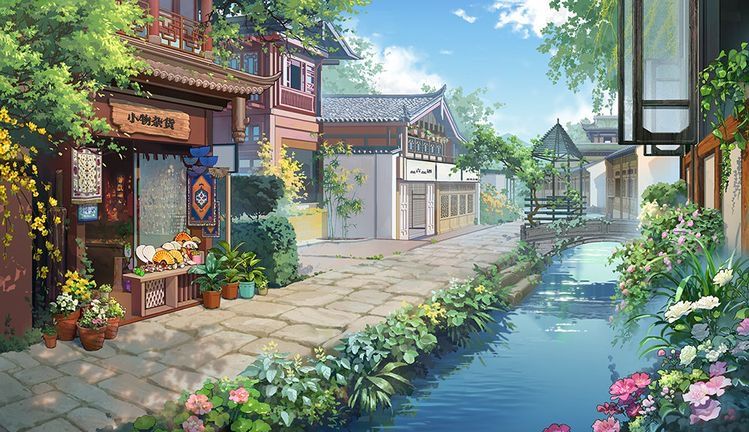What determines the ‘Japan-ness’ of a space? Common perceptions of a cosy home or large-scale building under Japanese influence would be imagery of minimalism, harmony, and tranquillity. However, few are aware of the profound spiritual beliefs that serve as a foundation for its design. Therefore beyond mere aesthetics, Japanese Inspired Design draws from ancient Buddhist principles, imbuing spaces with a deeper sense of meaning. Discover three fundamental tenets seldomly discussed but integral to the essence of Japanese-inspired spaces. As a result t hese values, rooted in Buddhist teachings, offer unique insights into the soulful resonance of Japanese design.
Ephemerality
The Effect of Ephemerality on Construction
In Japanese architecture and design, the concept of ephemerality transcends mere transience; it embodies a profound understanding of impermanence deeply rooted in Buddhist teachings.

Image Credit: Atul Vinayak via Unsplash
Ephemerality is an important concept in Japanese culture, which celebrates the lightness of existence in the ever-changing nature of life. Moreover this contrasts with Western architecture, which often focuses on creating solid and lasting structures. Instead, Japanese design aims to capture beauty through a delicate balance of form, space, and light.
Japanese architecture places a great deal of emphasis on ephemerality when it comes to building methods, especially when it comes to material selection and form execution. With Japan’s rich history of woodworking craftsmanship, timber has long been revered as the primary building material, embodying the ethos of impermanence through its natural ageing process.

Post and Beam Construction System
Image Credit: Japan Woodcraft Association
A careful balance between structural stability and flexibility is required when using wood in construction, which is how the post and beam construction system was developed.

Shoji Screens
Image Credit: Japanese Beds
One of the most distinctive features of Japanese architecture influenced by the idea of ephemerality is the use of infill panels, notably seen in traditional shoji screens. These panels function as permeable walls, blurring the lines between internal and external areas and letting natural light in to produce dynamic patterns of shadow and light. the creative manipulation of perspective facilitated by sliding and folding panels enhances the feel of movement in the space.
Yamamoto-tei

Image Credit: Japan By Web
Yamamoto-tei is a tranquil sanctuary in Tokyo’s old Shibamata area that perfectly captures the spirit of transience with its unique architectural details and meticulous design. This traditional Japanese house from the Taisho period offers visitors a mystical experience where time appears to stop still, serving as a monument to the impermanence inherent in Buddhist philosophy.

Image Credit: Location Box
Visitors enter through the Nagaya-mon gate, a symbol of transition from the busy world outside to the calm space within.

Chigaidana
Image Credit: JAKYO
Inside, the living room gives a sense of openness and fluidity, with characteristic design elements such as ‘chigaidana’ (staggered shelves) and shoji (sliding wooden frame) adorning the space. Yet, it is the seamless integration of interior and exterior spaces that truly sets Yamamoto-tei apart.
Views from the living room blur the distinction between resident and landscape, inviting contemplation of the interconnectedness of all things. The Japanese Garden surrounding the house further enhances this sense of unity, with carefully curated elements that evolve with the changing seasons, echoing the transient nature of existence in a Japanese Inspired Design.
Therefore through its harmonious blend of form, function, and spirituality, Yamamoto-tei serves as a poignant reminder of the beauty found in impermanence, encouraging visitors to embrace the ephemeral nature of life.
Impermanence
Accepting Change on Another Level
Impermanence, rooted in Buddhist philosophy, asserts that all things in life are in constant flux. Japanese architecture incorporates impermanence by prioritizing adaptability and flexibility in designs, allowing spaces to evolve.

Modular ‘Muji Hut’
Image Credit: 6 Sqft New York City
For instance, modular construction methods enable easy disassembly and reconfiguration of structures to respond to changing needs and environments, fostering a sense of impermanence in the built environment. Designing for disassembly promotes sustainability by reducing waste and allowing buildings to be reused.
Consequently, this acceptance of change extends beyond physical structures to encompass a deeper understanding of the temporal nature of space. Architects embrace impermanence by designing spaces that can evolve, accommodating shifting functions and societal needs.
Nakagin Capsule Tower

Image Credit: BBB3viz via Flickr
An example of design inspired by impermanence in Tokyo’s urban landscape is the Nakagin Capsule Tower. Moreover completed in the early 1970s, this famous building, designed by renowned Japanese architect Kisho Kurokawa, embodies the goals of the Metabolist movement for flexible, adaptive, and recyclable architecture in a Japanese Inspired Design.

Image Credit: Tokyo Art Beat
The 14-storey apartment building represents a significant break from conventional permanent building designs. Moreover, it consists of 140 detachable and replaceable concrete pods, each measuring 300 square feet. Buried deep in Buddhist ideas of impermanence was Kurokawa’s vision of a “living” structure, one that could change and adapt to the demands of its occupants.
Consequently, the Nakagin Capsule Tower’s modular construction allows for the dynamic swapping of individual units, symbolizing the fleeting essence of life.
Function Over Aesthetic
Last but not least, the third spiritual tenet to be learned is non-attachment, a challenge to our hold on the material world. It encourages a deeper understanding of ourselves and our reality. Non-attachment serves to weaken the link between objects and their perceived value in a Japanese Inspired Design.

“The root of suffering is attachment.” – The Buddha
Image Credit: ANA
This concept extends to architecture and design, where buildings are not merely status symbols but dynamic spaces capable of transformation. Consequently, designers and occupants are becoming increasingly receptive to buildings that can transform and respond to evolving needs. Despite this fluid approach encourages a closer connection with the ever-changing nature of life and acknowledges the transient nature of our existence. You can check our article on Zen Inspired Architecture for more inspiration ideas.
As a result a more holistic approach to design is made possible by non-attachment, in which structures are viewed as living, breathing organisms that may change with their occupants. Hence adopting non-attachment in design provides a path to increased sustainability and harmony with nature in a world where material is frequently associated with power and prestige.
Mokuzai Kaikan
Take a peek at this majestic ‘wood building’, Mokuzai Kaikan, from Shinkiba, Tokyo.

Image Credit: Wikimedia Commons
The project served as a relocation of the offices of the Association of Wood Wholesalers in Tokyo. Unlike flashy structures, Mokuzaikaikan displays humility and understated elegance, showcasing the power of wood through meticulous design and execution. It celebrates the warmth, resilience, and texture of wood with remarkable discipline and detail.

Image Credit: Architectural Review
Lumber is seamlessly integrated into the structure, casting architectural concrete in cedar formwork. Moreover, The design emphasizes spatial continuity, layering, and natural light to create a harmonious environment.
Mokuzaikaikan prioritizes user comfort over grandiosity. Hence it doesn’t demand attention; instead, it offers a cozy environment that encourages conversation and reflection in a Japanese Inspired Design.

Image Credit: Nikken
Delicate moments are created inside the structure by skilful lighting design, which draws inspiration from Junichiro Tanizaki’s “In Praise of Shadows” and promotes reflection beyond material concerns. Therefore this project’s highlights are the expertly designed traditional Japanese rooms, which invite people to experience space with an enhanced sense of sensitivity.


















































